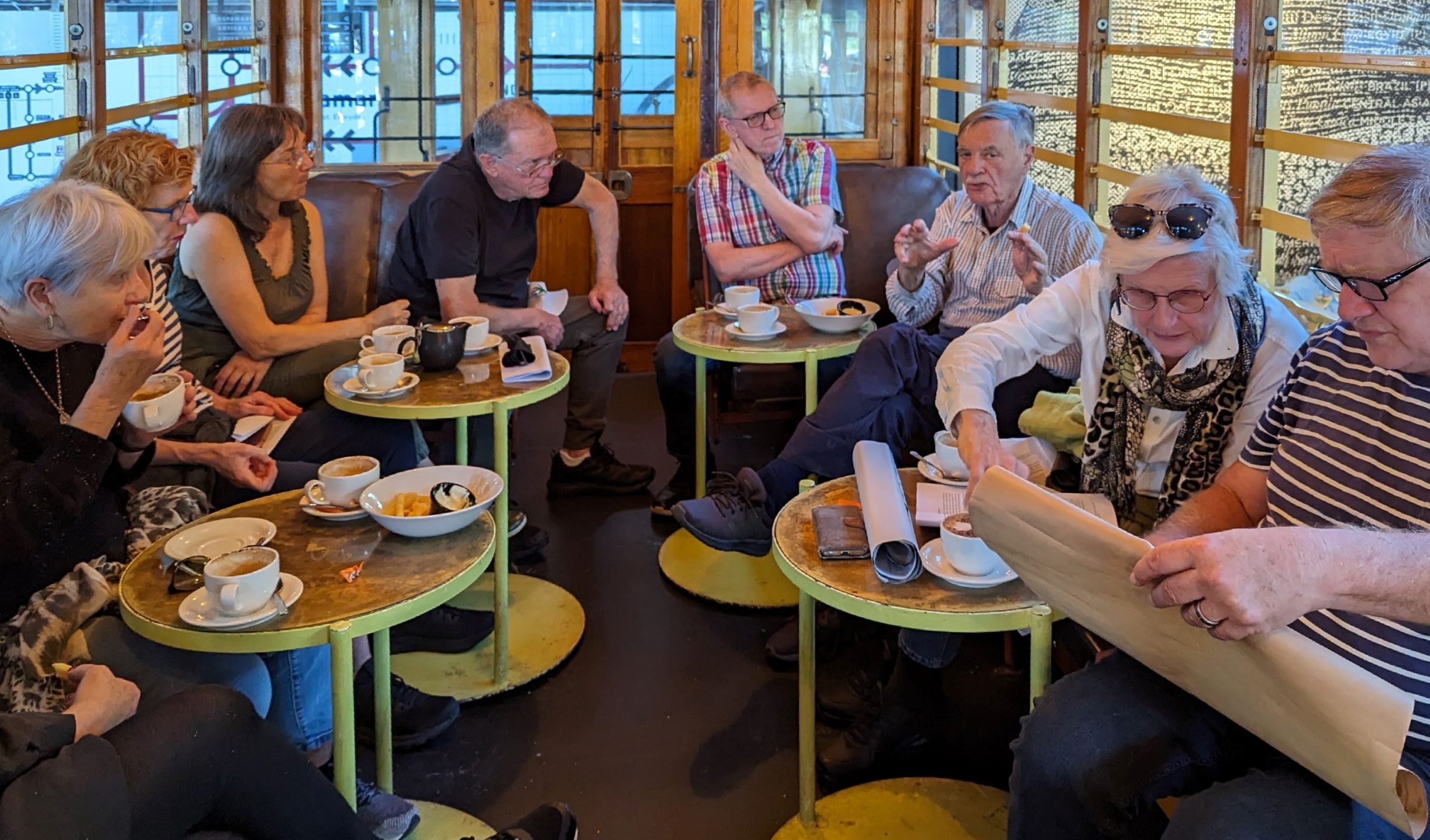By Duncan Leys, Glebe Society President, from Bulletin 8/2023, October

Max Solling who has led walks for the Glebe Society since 1969 was our guide and is still keen to share his great knowledge of Glebe and Forest Lodge history and heritage. The term ‘walk’ does not adequately describe the event, it was as much a talk as a walk, and it was also a challenge to us to imagine what and who were here before us.
The walk/talk covered a vast range of subjects set in a relatively small geographic space.
From the first settlement’s failed farming attempts to a semi-rural retreat occupied by the well-to-do and their picturesque villas. Then, subdivision of the Forest Lodge Estate and the building of two-storey terraces by local builders needing mortgages to fund construction. Then the arrival of industries including tanning, biscuit-making, a large scale laundry, coach building, munitions supplies, government’s Rozelle Tram Depots, GE Crane plumbing and nonferrous metal works.
Much more was covered including the transformation of Orphan School Creek from a source of drinking water for Forest Lodge residents to an industrial sewer; the history of civics and local government, state and federal politics, the churches and sectarianism, retailing, the pubs, the trots and the dogs and so much more. And the cast of characters entangled with Forest Lodge’s history was brought to life.
We were grateful that Max had the forethought to produce a 19-page booklet on the event, and we could read up later on what we may have failed to absorb.
I have done many local history walks and it’s only in Glebe and Forest Lodge walks that a member of the public joins in to add content and context to the talk. And so, it happened on this walk: a lady carrying her two bags of shopping joined in, telling us about the street where she lived which we were about to enter. When this happens, it is often something special.











There are no comments yet. Please leave yours.